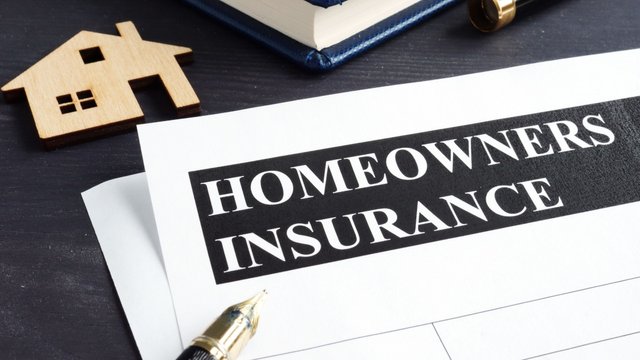What is the Average Cost of Homeowners' Insurance in Texas?

Because of Texas's distinct geography and climate, homeowner insurance costs there are higher than the national average. Location, property age, building materials, and safety amenities all affect the prices. Because of the high frequency of storms, hailstorms, floods, and wildfires, coastal regions like the Gulf Coast face the highest costs. Although the average yearly cost of insurance for homes in Texas is $2,000, the precise amount varies depending on certain risk variables. While proper asset maintenance and safety improvements can help lower these expenses, they nevertheless have a significant influence on local risk levels.
Texas's construction boom also has an impact on property prices, which in turn has an impact on long-term maintenance plans and insurance premiums. Insurance rates are also impacted by the assessment and maintenance plan. Due to these factors, insurance costs can be raised based on several important details.
Factors That Influence Insurance Rates
When determining your homeowner's insurance rate in Texas, insurance companies take a number of things into account. Important considerations include your home's age, condition, and location. Because older properties are likely to require more frequent repairs and are more likely to sustain damage, their insurance rates are often higher. Another crucial factor is the material that was utilised to build your house. Because they are more resistant to fire, water, and insects than timber homes, homes made of brick or concrete are less costly. Storm shutters and security systems are examples of security features that might lower your premium.
Your financial history is also important. A clean claim history and a high credit score might help lower your insurance premium. On the other hand, a high number of prior claims or bad credit might raise the rate considerably.
Location Plays a Key Role in Premiums
Texas offers a diverse range of climates, and homeowner insurance rates vary accordingly. Because of the risk of storms, areas around the Gulf coast, including Houston and Galveston, frequently have high rates. On the other hand, because of their low levels of natural risks, cities like L. Paso and Amarillo often have low rates.
In Texas, construction costs can vary widely due to local risks like flooding, crime rates, and extreme weather. These factors not only influence insurance premiums but also affect overall project budgeting. That’s why builders and developers turn to construction takeoff Texas services to get precise material and labor estimates tailored to specific locations, ensuring accurate planning and smarter financial decisions from the start.
Home Condition and Replacement Costs
The state and condition of a house directly affect insurance premiums. Houses in sound condition with recent upgrades tend to be less expensive to insure. Upgraded roofs, plumbing, and HVAC systems make the house less susceptible to damage. When a house has old features, insurers estimate a higher risk and charge the premium accordingly.
Replacement cost is another significant factor. This is how much it would actually cost to rebuild the house from the ground up using the same materials. If labor and building materials are high in your locality, the insurer will increase your premium to account for probable reconstruction expenses.
Since construction prices have increased over the past few years, the insurers have also revised their premiums. In ensuring, the providers look at construction patterns and material prices. When construction costs increase, so does the cost of replacement, and that is reflected in your premium.
Comparing Providers Helps You Save

All insurance firms have their own formula for determining premiums. Some places place greater emphasis on credit history, and others consider home age and location more heavily. Because of this, obtaining several quotes prior to deciding helps you secure better rates for the coverage you require.
Most Texas homeowners save money by combining their home and auto insurance with the same company. Others choose higher deductibles in order to lower their monthly fees. But the more money you pay up front, the more you'll have to pay when making a claim.
It’s also important to review your policy regularly. As home values and repair costs change, your coverage should match current conditions. Updating your policy ensures that you remain fully protected without overpaying.
Typical Coverage and Optional Add-Ons
A standard homeowners insurance policy in Texas covers your home, personal property, liability, and temporary living expenses if your home becomes uninhabitable. However, many policies do not cover flood or earthquake damage. You need to purchase separate policies for those events.
Some homeowners add extra protection for high-value items like jewelry, electronics, or antiques. Others include water backup coverage or increased liability protection. These add-ons improve peace of mind but also raise the cost of the policy.
Before selecting add-ons, homeowners should evaluate the condition of their property, the neighborhood, and common risks in the region. This helps tailor a policy that fits their needs and budget.
Tips for Lowering Your Homeowners Insurance Cost

There are many ways to reduce the cost of homeowners' insurance in Texas without sacrificing coverage. Regular maintenance and timely repairs show insurance companies that your home is in good shape. This lowers the risk and can reduce your premium.
Installing safety features such as fire alarms, surveillance systems, and reinforced doors or windows also helps. These additions protect your home and often qualify you for discounts from most insurance providers.
Another smart move is to avoid unnecessary claims. When you file frequent claims, insurers may raise your premium or deny future coverage. Handling minor repairs out of pocket keeps your record clean and your rate lower.
Average Cost Estimates by Texas Cities
The average annual cost of homeowners' insurance in Texas is approximately $2,000. However, some cities and regions pay more than others due to environmental and economic factors.
- Dallas: Around $2,400
- Houston: Roughly $2,600
- San Antonio: About $2,100
- Austin: Close to $2,000
- El Paso: Approximately $1,800
Final Thoughts on Managing Insurance Costs
These rates change yearly based on storm seasons, crime rates, and real estate trends. Homeowners should check with local agents to get the most accurate and current estimate for their area.
Although it might be costly, homeowners' insurance in Texas is nevertheless essential for homeowners. It shields you against monetary losses brought on by fire, theft, storms, and other unforeseen circumstances. Texas has a higher average cost than many other states, but with smart planning, you may control your spending.
You can discover coverage that suits your house and your budget by comparing providers and learning what factors affect your cost. The ultimate cost depends on a number of factors, including location, home condition, and safety features. Maintaining the condition of your house and being aware of local hazards will help you keep your insurance costs down.
FAQs
1. Why is homeowners' insurance more expensive in coastal Texas?
Coastal areas face greater risks from hurricanes and flooding, leading to higher insurance premiums.
2. Does Texas require homeowners' insurance by law?
No, but mortgage lenders usually require it to protect their investment.
3. Can I lower my insurance cost in Texas?
Yes, by bundling policies, improving home security, or raising your deductible.
4. Is flood insurance included in a standard policy?
No, it must be purchased separately if your area is at risk.
5. Do ZIP codes affect insurance rates?
Yes, rates vary based on local crime, weather risks, and historical claims.